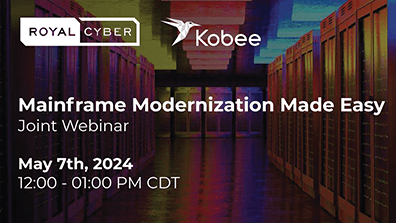Enterprise-wide CI/CD
When you need full control, complete insight and an automated CI/CD toolchain that simply works for your enterprise environment


- companies using our solutions -
All the features needed to automate your development process in a single application

Customizable Life Cycles
Each project can have multiple life cycles. Each life cycle provides a customizable workflow for automating the activities required to move back and forth in the development/release process.

Automated Build
The framework supports Release and Package-based builds (Distributed and Mainframe). You can have continuous integration (CI), scheduled or forced builds. Once the release is built, it is stored as an archive for later use.
Build types supported:
Full Build, Partial Build, Production-based Partial Build, or tag-based Partial Build.

Automated Deployment
The automated deployment process moves the release or package to the appropriate Test or Production environment. For each solution a dedicated set of pre-defined but customizable actions is used (we call these: "Solution Phases") to automate this process.

Approvals & Notifications
You can make your deployments pre- or post-approval based, and you can also get notified by e-mail of any successful or failed build or deploy.

Toolchain Orchestration
No matter which tools you are using, they can be integrated in your automated lifecycle. Based on the outcome of your tools (passed or failed) a next action will be executed and the information will be logged.

Integrations & Test automation
Most popular Version Control Repositories (Git, GitHub, MS TFVC, Azure DevOps Service Version Control, CVS) and Issue Tracing Systems (Jira, Microsoft TFS, Azure DevOps Services, MicroFocus ALM and GitHub) are supported. In other cases the API can be used to integrate any VCR or ITS. Software tests are automated by triggering 3d party testing tools and evaluating the results.

Compliancy and Security
We enable the use of process standards (CMM, ITIL, Six SigmaTM, Sarbanes-Oxley). User Access Control is handled by your company’s own security system (Active Directory, LDAP, Kerberos).
See how Kobee will help your release faster for your environment
Orchestrate your toolchain
Your software development process has many facets and thus requires many tools.
Kobee has the means to orchestrate these tools in a process flow preferred by you.
Your tools are orchestrated from one central place, their outcome is logged, ready for analysis.
PLAN
All you need to do is enter the related ticket (identifier) from your favorite requirements or issue tracking tool when commiting code.
Kobee will commence the process flow, update the ticket in your requirement or issue tracking tool, and inform you about which builds and deploys the ticket is part of.
CREATE
Use your IDE of choice; use your VCR of choice; use your Build tool of choice (Kobee, Jenkins,...).
Every following action from this point forward is initiated by Kobee and is fully documented and repeatable.
VERIFY
When you deploy to a test environment or run automated tests, the results will be stored. Following actions are automatically triggered, based on the outcome (Passed or Failed).
For automated tests, use your tool of choice: Selenium, HP ALM,...

PACKAGE
Release based or Package based (only a selection) builds are carefully packaged as archives. They are created according to specific deploy environment criteria, so the subsequent deploy step is fail-safe.
RELEASE
Once everything is fully tested and approved you are ready to deploy to production. Deploys can happen on demand, scheduled or automated (continuous deployment).
CONFIGURE
As part of your deploy process you can use provisioning. For example using a Docker Phase for deployment.
Do you need more information
or do you want to talk about your current situation?
We like a challenge! So tell us about YOUR company and what issues you would like to solve for YOUR development and release process.

Release quality software faster

Lower your development costs
Ready to improve?
Companies we've helped to release better software faster







